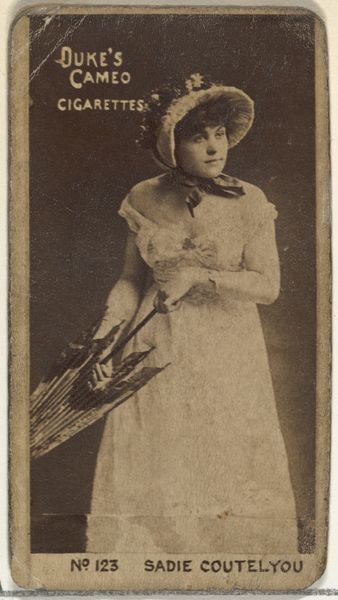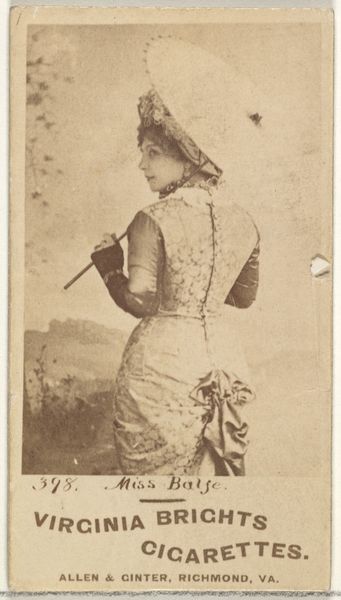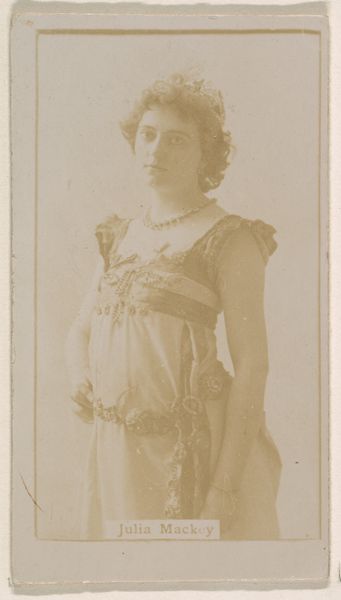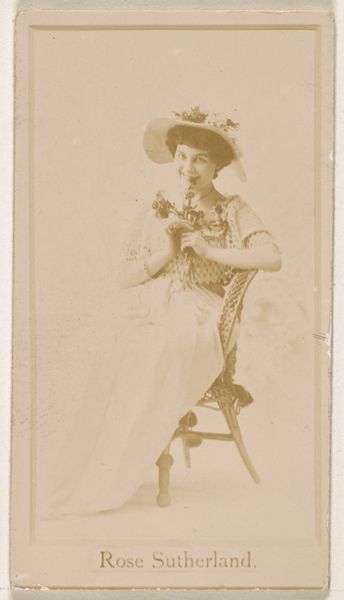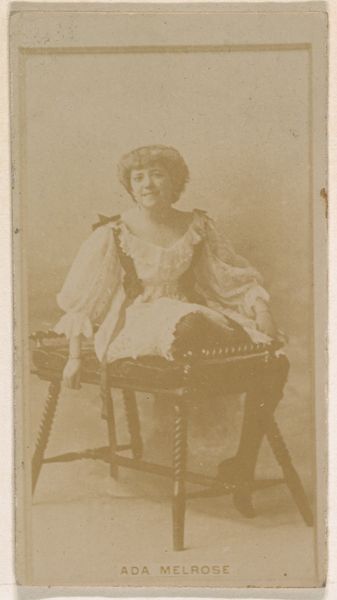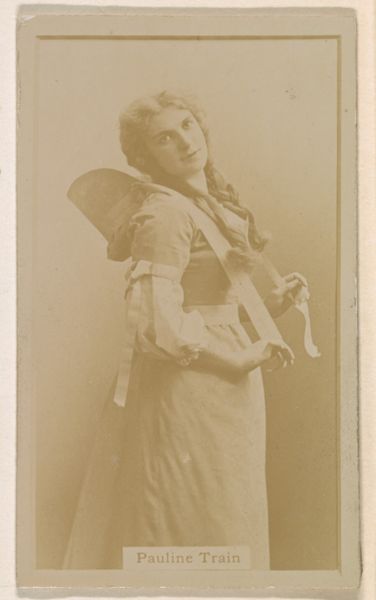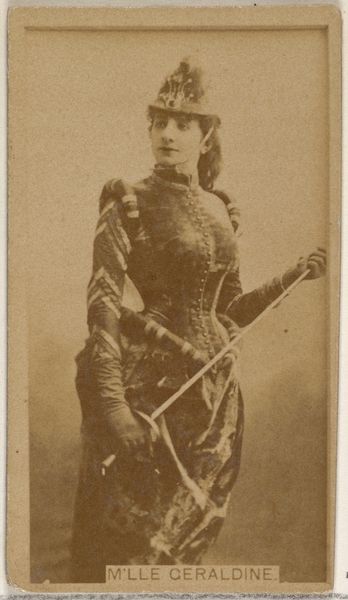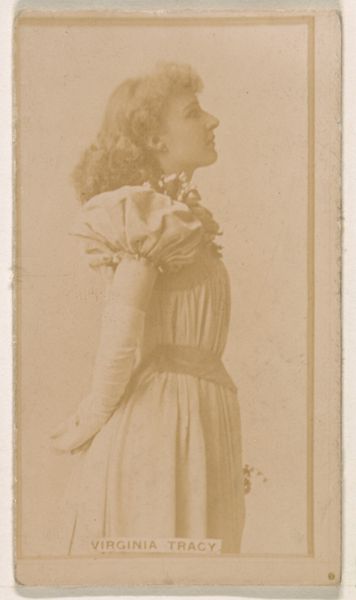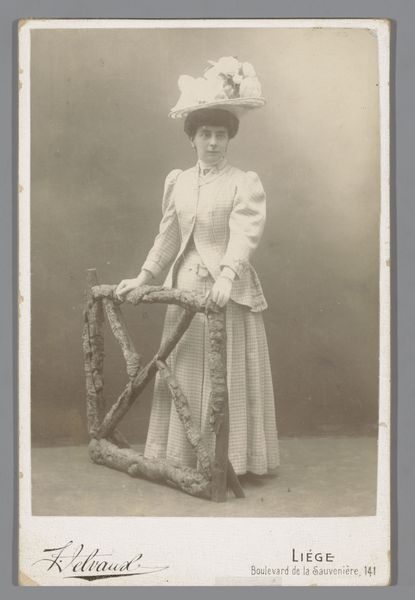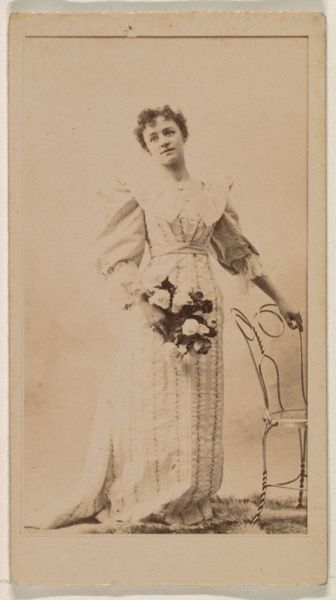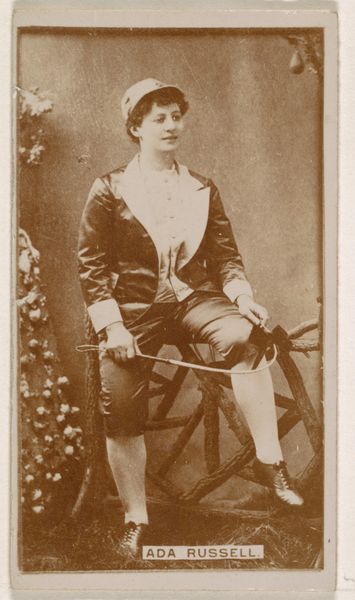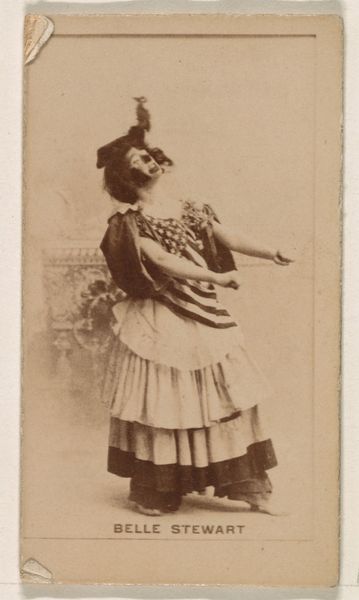
Dimensions: height 166 mm, width 107 mm
Copyright: Rijks Museum: Open Domain
Curator: Looking at this photograph, I feel instantly transported. There’s something about the sepia tone and the formality of the pose that whispers stories from another time. It’s wistful, melancholic, yet strangely empowering. Editor: Indeed. This gelatin-silver print, taken between 1881 and 1903, titled “Portret van een onbekende jonge vrouw met een cello"—"Portrait of an Unknown Young Woman with a Cello"—offers a glimpse into the complex position of women within the arts during that period. Curator: Absolutely. It’s intriguing, isn’t it? I mean, she looks almost defiant, doesn’t she? Posing with her cello, almost as if it's a weapon or a shield, guarding her spirit from the expectations of the age. Editor: Precisely! We have to understand that this era, steeped in Victorian ideals and the rise of burgeoning feminist movements, placed women in an odd space. Artistic expression was "allowed" as an accomplishment, but not necessarily as a profession. Curator: Yes, it's as though this image captures that delicate balance, where a woman asserts her presence, perhaps challenging the assumed boundaries of her gender. It seems almost Romantic in style—like she might have stepped right out of a novel. I wonder, who was she? Did she find fame playing that cello, or was it only played behind closed doors, for an audience of one? Editor: The anonymity adds a layer of significance, don't you think? She becomes emblematic of countless women artists whose voices and talents were often overlooked, overshadowed. A cello became more than an instrument; it represented a voice, agency, and potentially, a form of resistance. It speaks volumes. Curator: Exactly. You can almost hear the low hum of its strings and see the shadows in her eyes—and almost envision an untold story within this simple portrait. Editor: Well said! Hopefully, with each viewing, the legacy of her untold narrative encourages contemporary discourse surrounding access, inclusion, and recognition for women, women of color, and queer artists of our era and beyond. Curator: Ah, I like that very much. Makes you wonder if the woman in this photograph knew what reverberations of inspiration and advocacy would radiate from a mere image so many years later. Editor: An evocative question!
Comments
No comments
Be the first to comment and join the conversation on the ultimate creative platform.

